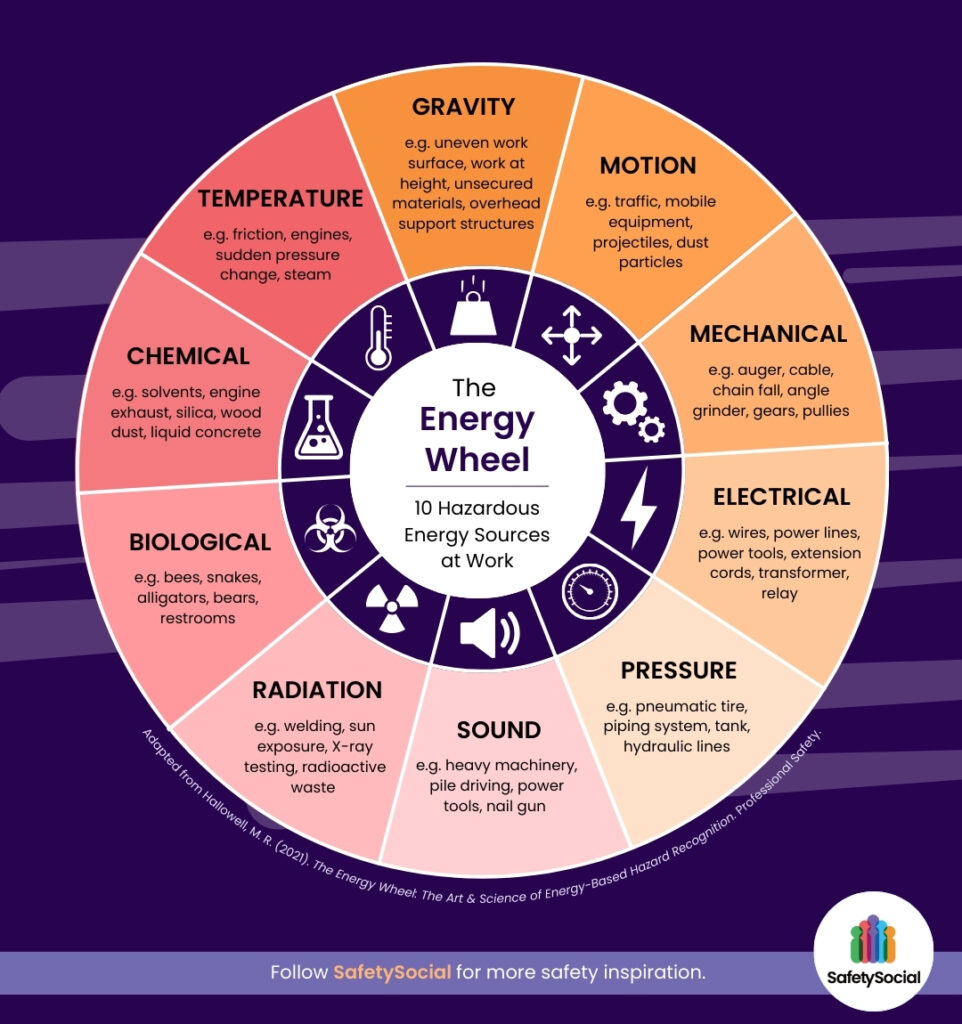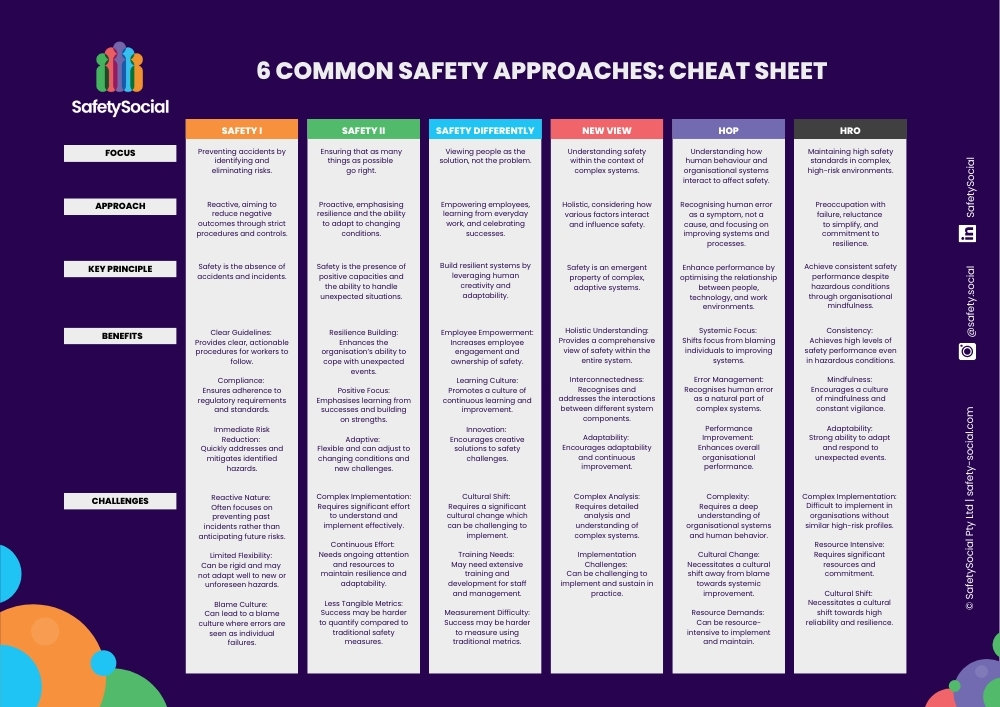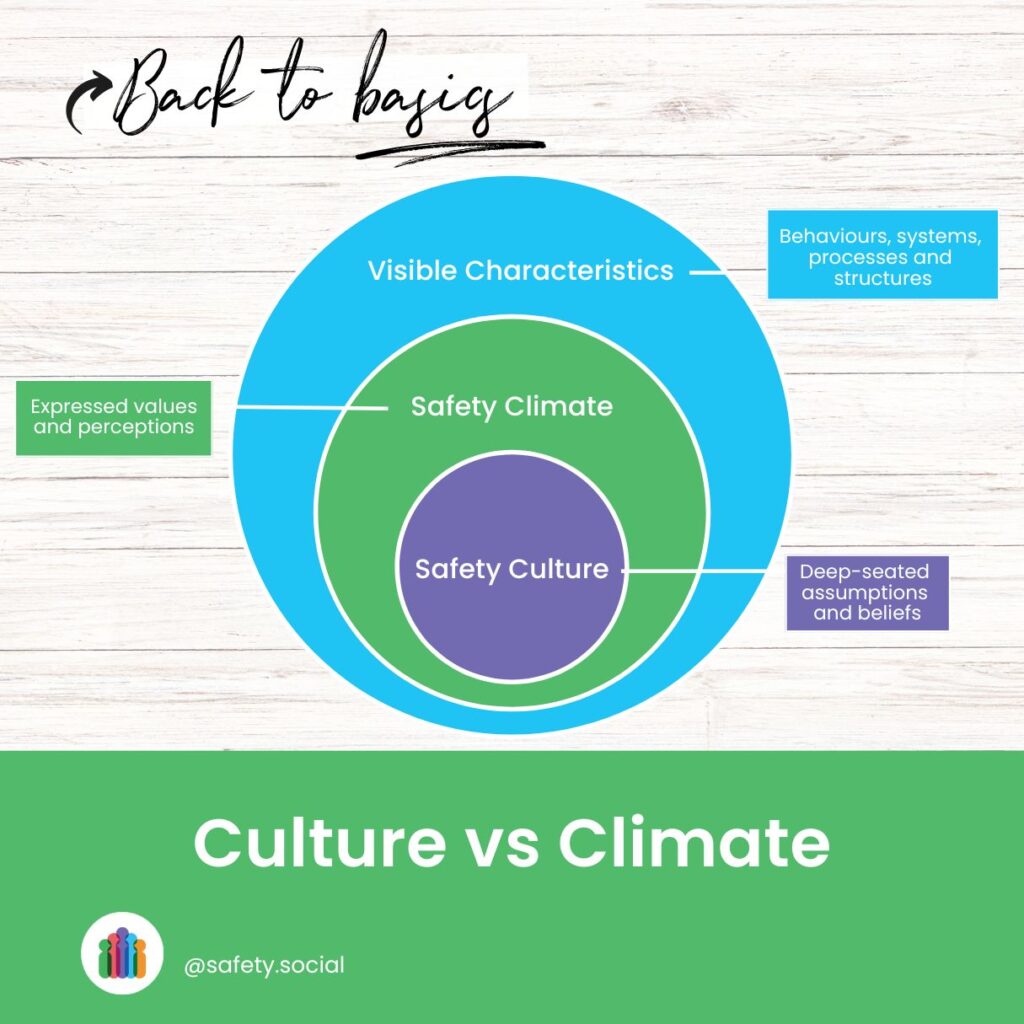We all know the importance of spotting hazards to keep workplaces safe. But here’s the reality: most workers only identify around 45% of the hazards they face during a work shift. And it doesn’t matter how experienced someone is—these blind spots affect almost everyone.
Why Do We Miss Hazards?
It all comes down to how our brains are wired. Hazards like gravity (fall risks) and motion (moving machinery) are quick to notice because they trigger our instinctive fight-or-flight response. But others—like mechanical parts, chemicals, or pressure—need more mental effort to spot, which is why they’re so often missed.
What is the Energy Wheel?
The Energy Wheel helps fill in those gaps by breaking down hazards into ten different types of energy sources found in the workplace. Explored in depth by Matthew R. Hallowell and published his 2021 peer-reviewed paper, The Energy Wheel: The Art & Science of Energy-Based Hazard Recognition, The Energy Wheel is a practical tool that can help broaden the way we identify hazards, helping workers see what might otherwise be overlooked.
The wheel’s categories cover:

- Gravity: Falls or objects that could fall.
- Motion: Anything that moves—vehicles, equipment, particles in the air.
- Mechanical: Moving parts of machines, like gears or chains.
- Electrical: Risks from currents, such as power lines or cables.
- Sound: Loud noises or vibrations from things like machinery.
- Pressure: Compressed liquids or gases (think tanks or piping).
- Temperature: Heat or cold sources, like steam or engines.
- Chemical: Toxic substances, dust, solvents—anything that could affect health.
- Radiation: Risks from electromagnetic waves or particles (like welding, x-rays or sunlight exposure)
- Biological: Hazards from living organisms and viruses (think bees, snakes or even microbes)
By running through these categories, almost like a checklist, workers can uncover hazards they might not spot right away.
How It Works (and Why It Helps)
The Energy Wheel is all about making what you already do, better. It doesn’t add another step to the safety process—it just makes identifying hazards more strategic. And according to Hallowell’s research it’s effective. Using the wheel improved hazard recognition skills by around 30% across industry sectors and trades.
Quick Tips for Using the Energy Wheel
Want to make the most of the Energy Wheel? We’ve summarised a quick checklist from Hallowell’s paper to help you get started:
- Use It to Enhance What You’re Already Doing: Don’t treat it as an extra safety activity—use it to improve how you already identify hazards.
- Add Structure to Safety Briefings: Make pre-job briefings more strategic. The Energy Wheel adds a layer of structure to how teams identify and talk about hazards.
- Think Beyond Pre-Job Briefings: Use it for on-the-fly hazard scanning, especially when conditions change during the workday.
- Trust Instinct First, Wheel Second: Let workers use their instinct and experience to identify hazards first, then use the Energy Wheel to double-check for anything overlooked.
- Don’t Rush to Change Documentation: Resist the urge to overhaul safety paperwork immediately. Let the team get familiar with the wheel first, then make gradual changes.
- Avoid Labelling Hazards as Just “Energy”: Don’t just call something “mechanical”—be specific. Use the energy categories to guide discussion, not replace detail.
- Encourage Conversations & Share Insights: Use the wheel to improve safety discussions, helping workers share their experiences and practical safety knowledge.
The Big Picture
The Energy Wheel isn’t about reinventing your safety practices—it’s about adding structure to how we recognise hazards. It’s easy to use, helps bring less obvious risks to light, and fits right into your current safety checks.
Final Thoughts
Hazard recognition doesn’t need to be complicated to be effective. The Energy Wheel is a simple way to catch those hidden risks, making your workplace safer without adding unnecessary steps.
Want more curated content like this straight to your inbox? Subscribe to our newsletter. 👇



